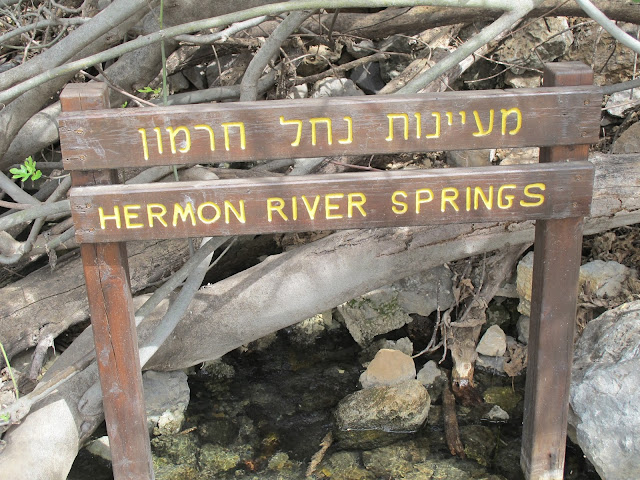Bokertov
(good morning)
 |
| Leaving the Kibbuts to be on the bus at 8 am. |
 |
| Driving North through the Hula valley. Our first stop is Tel Dan |
 |
| The Dan Stream |
 |
| Wild Cyclamen are lovely between the weeds. |
 |
| A short walk around one of the rivers feeding the Jordan. |
 |
| Lebanon & Syria in the distance. Very near the border. |
 |
| Contemplate the meaning of "Living Waters". |
 |
| On our walk, we followed the Dan River. |
 |
| Amazing beauty |
 |
| Great walking trail. Especially over the stones. |
 |
| Dale and Maryann snuggling under a tree. |
 |
| The trail passes along streams, the river, and through a shady tangle of trees, mainly laurel, Italian buckthorn and Syrian ash. |
 |
| An alter |
 |
| Inside the city are traces of ruins, in which the archaeologists excavated residential houses of the city dated to the Canaanite period. |
 |
| Porcupine Den |
 |
| We...Walk |
 |
| Abraham's Gate to the city |
 |
| City gate from the time of Abraham. Most ancient gate in Israel. A very special place to be standing. Wow. |
 |
| "Gate of the Three Arches" The Canaanite Gate.Bricks were prepared using the ancient techniques of placing the mud into a mold, then baking it in the sun. |
 |
| Another view of the Corinthian capital and the temple. The temple was depicted on the coins of the city, with four columns and the status of Zeus in the center. |
 |
| Doron showing us a what druze pita bread looks like. Very tasty smeared with olive oil, and filled with anything you like. |
 |
| Views from restaurant. The only mountain I saw with some snow. |
 |
| Surroundings from the restaurant. |
 |
| Most East side of Israel near the Syrian border. |
 |
| Bunkers on hill tops is a common sight. It was in this area that Paul was struck down with blindness for 3 days. |
 |
| Avocado trees still in bloom farther north. Acts 9 was read. |
 |
| Olive Tree |
 |
| Lime Tree |
 |
| Visiting an Ancient Talmudic Village and Synagogue. |
 |
| Homes after an earthquake. |
 |
| We all had the opportunity to wash our hands in the olive oil residue. John decided to clean his face as well. He sure glowed after his treatment. |
 |
| 800 year old olive tree. Olive oil is mentioned in the Bible 37 times, and olive trees 13 times. Plus the story of Noah and the olive branch. |
 |
| Old olive press. |
 |
| Ruth and Alida |





























Lol! I love the work you've done compiling all of this Alida. I really appreciate the reminder of things such as Doron's singing- funny thing- I almost forgot about that.
ReplyDelete(btw- Twinklinblue is me, Maryann)
ReplyDelete